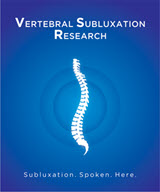The Roadmap to Overcoming the NHS’ Criticism of Chiropractic
Currently, the use of chiropractic in the UK’s National Health Service (NHS) is so limited that the National Institute for Health and Care Excellence (NICE) recommends that adjustments be performed to treat one only condition: persistent lower back pain. There is no other way to view this than an absolute travesty. Subluxation-based chiropractic care has been shown to positively effect countless conditions. Somehow, for reasons unknown, the NHS holds a very biased view of the science supporting the healing art that is enjoyed by millions across the globe and refuses to support UK residents to benefit from the wide-spectrum of benefits related to regular care.
Obviously, this has to change. And, according to public health dogma, the only way for national authorities to get the Big Idea is to put up some Big Data!
NHS’ Perspective
According to their website, the NHS states,
There is some, mostly poor quality, evidence that that spinal manipulation is an effective treatment for some other musculoskeletal conditions involving the bones, joints and soft tissue. The evidence on spinal manipulation is not strong enough in these cases to form the basis of a recommendation to use the treatment. There is no evidence that treatments offered by chiropractors are effective for other conditions.
Some of the conditions that the NHS is referring to include:
- Allergies
- Fibromyalgia
- Hypertension
- Mental health conditions like anxiety and depression
Ultimately, the NHS insists that, “Fair tests into the effectiveness of chiropractic treatments for these conditions have not been conducted.”
However, nothing could be further from the truth. Not are these claims unfounded on scientific data, speak volumes to the level of ignorance that the NHS has of the research that has been conducted validating chiropractic care for a plethora of conditions outside the narrow scope of musculoskeletal pain disorders. The bottom line is that the efficacy of removing neurological insult through subluxation-based chiropractic management has been substantiated again and again in the literature.
Chiropractic & Blood Pressure
Let’s take a closer look at one of the conditions seen above, which the NHS explicitly insists is outside the scope of chiropractic management because there is supposedly “no evidence” to support such an association: hypertension.
In 2007, the Journal of Human Hypertension published a groundbreaking study, headed up by world-renown hypertension specialist George Bakris, clinically demonstrating that chiropractic care is more effective in managing hypertension than the conventional medical approach. A mix of 50 male and female Stage 1 hypertension patients with the mean age of 52.7 years were recruited to participate in a double-blind, placebo-controlled design for eight weeks. During this time, none of the participants took antihypertensive medications and they were randomized to receive National Upper Cervical Chiropractic (NUCCA) care or sham adjustments. At the end of the study it was observed that the patients receiving subluxation-based chiropractic adjustments experienced an average decrease of 17 mmHg in systolic blood pressure and an average decrease of 10 mmHg in diastolic blood pressure compared to the control group, which only presented with a 3 mmHg and 2 mmHg decline, respectively. In addition to observing no adverse effects from NUCCA care, Bakris et al. ultimately concluded that, “Restoration of Atlas alignment is associated with marked and sustained reductions in BP similar to the use of two-drug combination therapy.”
Taking chiropractic’s efficacy in managing blood pressure one step further, Torns set out to determine how removing upper cervical vertebral subluxations through the Atlas Orthogonal (AO) protocol affected arterial blood pressure in 42 people that were a mix of hypotensive, normotensive, pre-hypertensive, Stage 1 hypertensive, and Stage 2 hypertensive patients. The findings, published in the Journal of Upper Cervical Chiropractic Research, demonstrated that correcting the vertebral subluxation complex (VSC) was even more far-reaching than Bakris et al. even suggested. Taking immediate pre- and post- blood pressure readings, Torns discovered that AO adjustments literally facilitated homeostasis for each group evaluated.
Table courtesy of Journal of Upper Cervical Chiropractic Research. (Torns S. Atlas vertebra realignment and arterial blood pressure regulation in 42 subjects. J Upper Cervical Chiropr Res: Spr 2012(2012:2): 40-45.)
The significance of Torn’s research is seen through multiple layers. At first blush, it is easy to concentrate on the fact that his work is the first study to clinically demonstrate blood pressure normalizing because of subluxation-based chiropractic management. Although this is profound and groundbreaking in and of itself, the underlying premise behind why this occurred is even more critical. The consistent results that these 42 people experienced suggest that chiropractic adjustments have a global effect on homeostasis in the body and this point cannot be stressed enough. As diverse and intricately intertwined as the multiple physiological processes required to regulate blood pressure, this study highlights the multi-dimensional aspects of the VSC and what can happen to the body when removed. Nothing else on this planet can be attribute to such unbelievable findings.
In addition to these clinical trials, a growing number of case studies have reported findings that confirm these phenomena. At the end of the day, the fact that chiropractic care is an effective approach to manage and prevent blood pressure disorders is indisputable.
Global Trend
Unfortunately, the prejudice the NHS has against chiropractic is seen throughout the world. Just last July, ABC TV’s Catalyst, the only science journalism program on Australian primetime television, aired a 25-minute report veritably warning the entire country that chiropractic care for the pediatric population is unfounded on science and possibly dangerous. Shockingly, Catalyst must not have been familiar with the tomes of research published by the Journal of Pediatric, Maternal & Family Health since its inception in 2009.
Stateside, the New York Times published a review on arterial dissection and warned its readers that chiropractic care puts people at risk of stroke. Although, as Dr. Christopher Kent thoroughly reports, nothing could be further from the truth.
Obviously, something needs to be done about this global trend in chiropractic defamation and, thankfully, a few organizations have answered that call.
Answering the Call for Action
Spearheaded by the Foundation for Vertebral Subluxation, ChiroFutures Malpractice Group, and the International Chiropractic and Pediatric Association an agenda has been initiated to “assist the profession in gaining a higher degree of respect, understanding and acceptance in the health care marketplace, the scientific community and among the patients it serves.” Through what has been coined the Advancing Futures Vertebral Subluxation Research & Scholarship Initiative, a long-term plan to “validate the profession’s focus on the location, analysis and correction of vertebral subluxation and position chiropractic as a vitalistic, scientific, evidenced-informed clinical practice” has been outlined in a paper published by the Annals of Vertebral Subluxation Research.
As outlined in the article, the strategy of financially supporting a team of chiropractic researchers to earn advanced degrees in public health and other related fields has begun to lay the foundation to create an influx of evidence, which is expected to be used to effect policy change and initiate public health programs throughout the world.
The Foundation is actively seeking supporters who will help reverse the contention that chiropractic is a global public heath threat. Check it out today and consider supporting subluxation-based chiropractic research and scholarly activity!
Blogs
- The Chiropractic Cartel: A Look Back at Bias in Accreditation and its Imact on Today's Profession
- Inside Montana's Chiropractic Monopoly: ACA & MCA's Brazen Board Takeover
- Concerns Grow About Control of the NY State Chiropractic Board by the ACA - Use of X-ray in NY Under Threat
- Reproductive Health Information and Chiropractic Care: Navigating New Privacy Regulations
- Navigating Substance Use Disorder (SUD) Consent: What Chiropractors Need to Know















